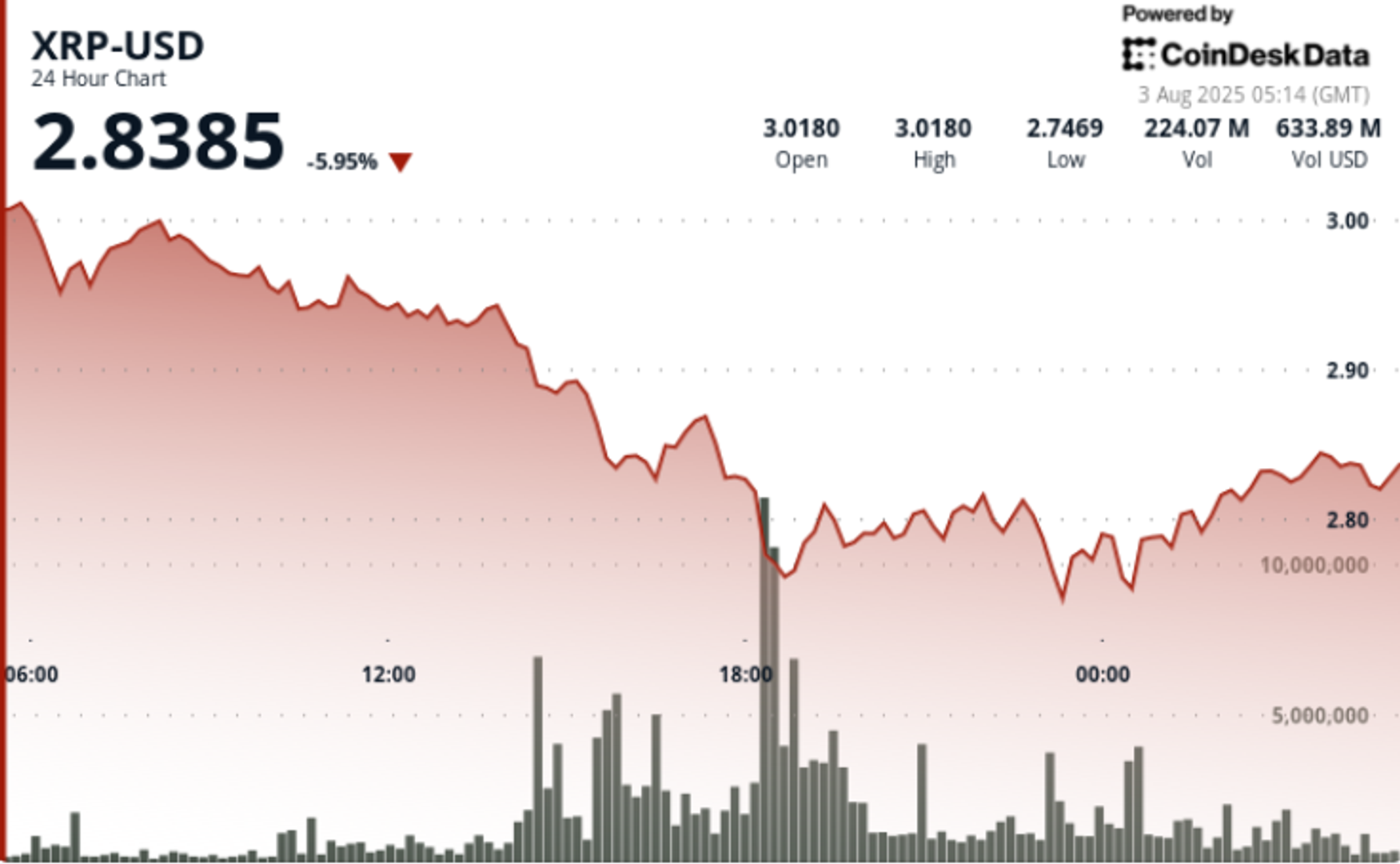XRP plunged nearly 9% in the 24-hour session ending August 3 at 04:00 (UTC+7), falling from $3.02 to as low as $2.75 before staging a mild recovery to $2.82. The decline was driven by heightened institutional selling pressure, with volumes during the heaviest selling window more than doubling the daily average. Price action suggests potential exhaustion near $2.75, though broader macro and liquidity risks remain elevated.
What to Know
- XRP saw peak sell pressure between 14:00–18:00 on August 2, with volumes reaching 222.24 million—183% higher than the 24-hour average of 78.52 million.
- The asset bottomed at $2.75, forming short-term support on heavy volume.
- Recovery attempts stalled at $2.84, with the final hour of trading closing at $2.82, indicating consolidation below key resistance.
- Volume-weighted price activity suggests accumulation interest at sub-$2.80 levels, but confirmation is lacking.
News Background
The XRP drawdown came amid widening global trade tensions and renewed tariff uncertainty that shook risk markets across the board. Meanwhile, institutional portfolios appeared to rebalance as macro conditions prompted capital rotation away from altcoins and into more liquid assets. Analysts point to ongoing adjustments by central banks and heightened geopolitical risk as catalysts for the broader sell-off.
Price Action Summary
- High: $3.02
- Low: $2.75
- Close: $2.82
- 24H Range: $0.27 (-8.91%)
Technical Analysis
- A volume climax at $2.75 coincided with XRP’s most aggressive hourly decline, typically a signal of capitulation or local bottoming.
- The $2.75–$2.76 zone now serves as first-layer support, while upside attempts are capped near $2.84.
- Volume fell sharply in the final hour of trading to ~650,000/min, compared to 3.7 million/min at peak, implying buyer fatigue or neutral flows post-dump.
What Traders Are Watching
- Can XRP hold above $2.75–$2.76 and build a base for recovery, or does failure to reclaim $2.85+ indicate further downside?
- Watch for institutional inflows or continued exchange outflows, which may validate accumulation narratives.
- Traders are also closely tracking CD20 Index volatility and macro headlines, including U.S.-China trade developments, for short-term cues.
